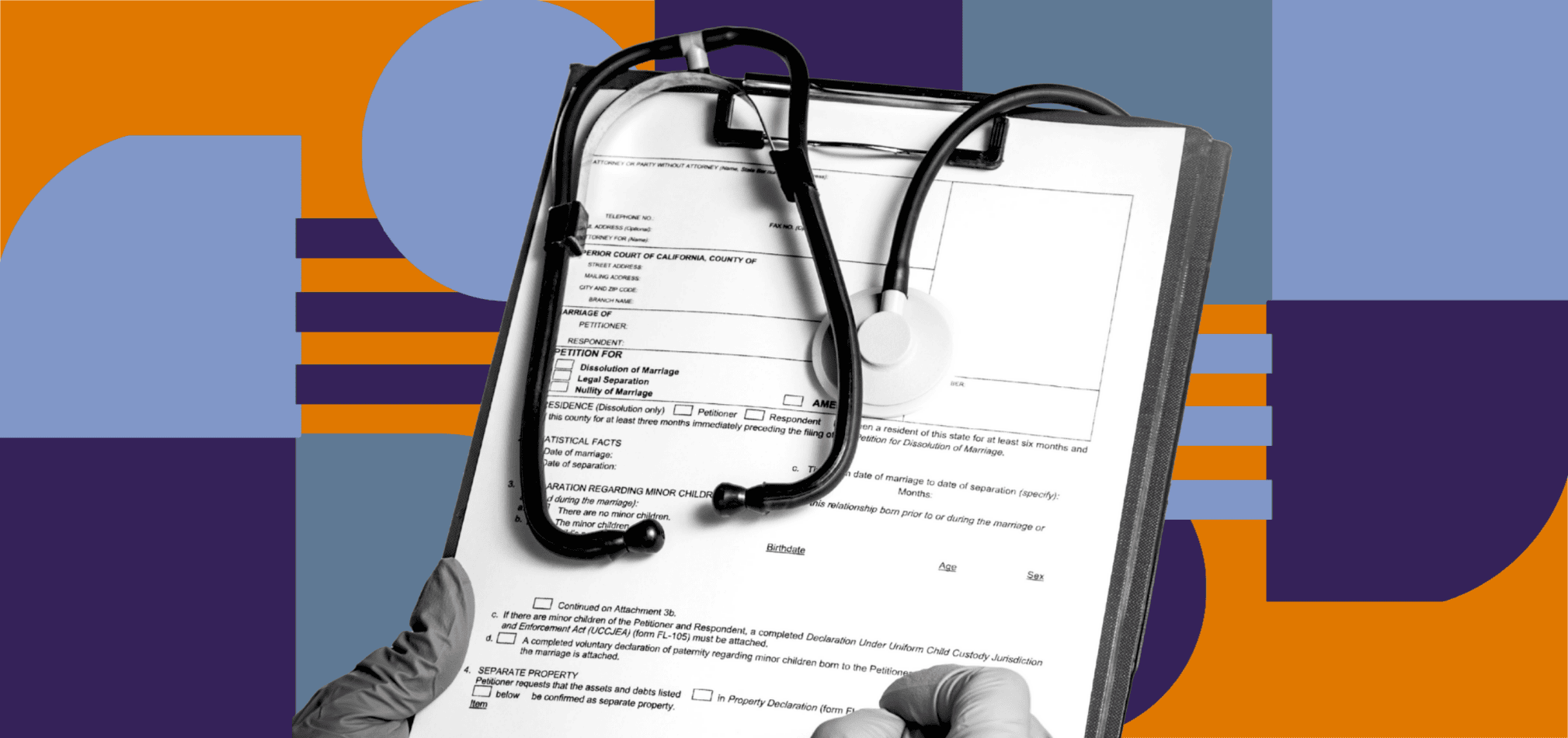
*This article was written in consultation with Mariam Treystman.
If you’re bringing new staff into your home health or hospice agency, understanding MD orders is essential from day one. This isn’t just another administrative task. Orders are at the core of how we deliver care, stay compliant, and get paid.
At The Home Health Consultant, we built this guide specifically for onboarding. Whether you’re training new clinical staff, back-office team members, or quality reviewers, this article is designed to be shared, saved, and used as part of your internal training program.
Yes, MD order delays can lead to denials and survey deficiencies, but that’s not the main point here. We’re going back to basics on purpose. This is about giving your team the foundation they need to handle orders correctly from the start.
In this article, we’ll cover:
- What an MD order is
- The different types of orders your agency must manage
- Who can sign what
- How to stay compliant within the 30-day rule
- Tips to avoid denials, deficiencies, and ADR nightmares
If you’re training new hires or reinforcing the basics with existing staff: start here.
What Exactly Is an MD Order in Home Health and Hospice?
An MD order is a formal directive from a physician, nurse practitioner, or other qualified provider that authorizes specific care for a patient. In home health and hospice, you cannot legally treat a patient without an MD order in place.
MD orders document instructions from an MD on how and when to deliver care to a patient. The ordering provider must sign these documents to confirm or direct care.
Verify & Read Back Protocol in Home Health & Hospice
Before we dive into the different types of MD orders, we need to explain an essential practice: verify and read back protocol. Verify and read back protocol applies to all MD orders, regardless of the type.
Essentially, it’s a safeguard to ensure orders for a patient are not miscommunicated or misunderstood. This is a practice in every kind of healthcare involving MD orders and is not exclusive to home health or hospice.
Here’s the procedure:
1. Document the Order Immediately
As soon as a nurse or clinician receives a verbal or phone order, they must write it down immediately. Don’t rely on memory, even for simple instructions. Document every detail, including:
- Medication name (spelled out if necessary)
- Dosage and units
- Route (oral, IV, subcutaneous, etc.)
- Frequency and timing
- Any special instructions
2. Read Back the Full Order
Next, the clinician must read back the entire order, exactly as documented, to the provider. This isn’t just a courtesy. It ensures that what was heard matches what was intended.
This step should never be rushed. If anything is unclear, the provider should clarify immediately.
3. Verify and Confirm
Once the provider hears the read-back, they must confirm that it is correct. If any part of the order is misheard or written incorrectly, it should be corrected at that moment before moving forward.
4. Document That Read-Back Was Completed
Finally, your staff should document in the order note that the read-back and verify protocol was completed. Most EMRs have a checkbox or field to initial this step.
Why Read-Back Matters
Skipping or rushing the read-back process opens the door to medication errors, incorrect treatments, survey deficiencies, and patient harm. It’s one of the simplest yet most critical safety practices your team can perform.
The Six Types of MD Orders You Must Understand to Stay Compliant

There are multiple kinds of MD orders. Each has slight operational differences that are essential to be aware of to maintain compliance.
1. Referral Orders: The Starting Point for Every Patient
The referral is the very first order that allows you to admit a patient. It can come in minimal form (e.g., a note that says "Eval for HH services") and may lack key details.
Pro Tip: Agencies should always clarify vague referrals before proceeding. Incomplete documentation here can delay or jeopardize everything downstream.
2. Admission Orders: Documenting the First Contact and Patient Condition
During admission, your clinician evaluates the patient and reports findings back to the physician, who then provides directions for care. This becomes the admission MD order.
An admission MD order should always include:
- The patient’s current condition
- Full list of medications in the home
- Requested care frequency, disciplines and any other treatment instructions
After receiving verbal instructions from the physician or NP, the clinician must immediately transcribe the order word for word. Then, they must read the full order back to the provider and receive verbal confirmation that what was documented is accurate.
Only after this full confirmation can the verbal order be finalized, signed, and sent for physician signature.
3. Face-to-Face Documentation: Not an Order, but Still Required
Face-to-face (F2F) documentation is a CMS requirement. It’s a short, signed narrative from the referring provider explaining why the patient qualifies for care.
Don’t skip this. Missing or untimely F2F documentation is a common reason for claim denials.
4. Certification of Terminal Illness (CTI): Required for All Hospice Patients
Like face-to-face documentation, the CTI isn’t technically an MD order. However, it’s a non-negotiable requirement for Medicare hospice eligibility.
The Certification of Terminal Illness is the formal document in which the physician certifies that the patient’s life expectancy is six months or less if the illness runs its normal course.
A patient cannot be admitted to hospice—and your agency cannot bill Medicare—without a properly completed CTI.
A valid CTI must include:
- A statement confirming the patient’s terminal prognosis (≤ six months)
- A brief, individualized narrative supporting that prognosis
- The benefit period start and end dates
- Physician signature and date
Important rules to remember:
- Initial CTI must be signed no later than 2 calendar days after hospice care begins (by the end of day 3).
- If written certification is not immediately available, an oral certification must be obtained within that same 2‑day window, with written documentation filed later—but before billing Medicare.
- Who Can Sign a CTI
- Initial Certification:
-
Medical director of the hospice or the physician member of the hospice interdisciplinary group (IDG); AND
- The beneficiary's attending physician (if they have one)
-
- Recertification: Only the hospice medical director or the physician member of the IDG is required to sign and date the certification
- Initial Certification:
Missing or vague CTI narratives, late signatures, or the wrong clinician signing the form are all common reasons for claim denials in hospice.
5. The Plan of Care (POC): The Master Document of the Episode
This is the most comprehensive MD order and serves as the treatment plan for the episode.
- In home health, you must use Form 485/487
- In hospice, any format is acceptable as long as required elements are present
Pro Tip: Make sure the care plan is personalized. Including contextual, non-clinical details (e.g., “patient lives alone; daughter checks in weekly”) strengthens your individualized plan of care—and supports you in ADRs. This is a deficiency that every accreditor lists as one of their top deficiencies.
For an intro article on care plans and how they work within the structure of an episode or benefit period, check out the article below.
6. Interim Orders: For Every Change Between Admission and Discharge
These are MD orders issued anytime there’s a deviation from the original care plan. They cover:
- Missed or rescheduled visits
- Changes in frequency
- Medication updates
- Refusals of care
- Any change in condition (even if minor)
Missed visits are only permissible if the patient refuses service, and you need to be able to prove that. In the case of a scheduling issue, document everything thoroughly. Don’t just state “missed visit.” Include:
- What the patient or caregiver said
- How many attempts were made to reschedule
- Whether noncompliance warnings were issued
- Whether any family or backup caregiver assumed the task
This level of detail will protect your agency during ADRs and surveys.
7. Discharge Orders: Summarizing and Closing the Episode
This is one of the only order-based document types that matters when you send it, not just when you receive it. Any and all MD orders signed by the doctor and returned to the patient’s chart within 30 days, this includes discharge orders.
However, discharge summaries specifically must be sent within 5 days of patient discharge.
Compliance Warning: Failing to send the discharge summary within 5 days is considered a conditional-level deficiency. This is one of the most serious CMS citations you can receive.
Who Is Legally Allowed to Sign an MD Order?
Not just any clinician is permitted to sign an MD order. But you do have a few options when it comes to who can.
External Signatures:
- The attending physician or NP directing care must sign all orders.
- No substitutions: If Dr. Smith is directing care, Dr. Jones in the same group can’t sign for her.
Internal Signatures:
- Only licensed clinicians at your agency may sign MD orders on your side.
- Clerical staff may not sign
Even if a clerical staff member is transcribing the order into your EMR, they may not sign it on behalf of the clinician. Only RNs, PTs, OTs, SLPs, or medical directors (if employed) may sign MD orders from your agency.
How to Stay Compliant with the 30-Day Rule & MD Orders

Once a verbal order is received, your agency has 30 days from the verbal receipt date to:
- Transcribe and sign the order
- Do not delay transcribing. CMS expects that verbal orders are written at the time of the call, not at the end of your shift. You must document the verbal order as it’s being given, including the exact time and date of receipt.
- Send it to the physician or NP for signature
- Get it back signed and placed in the patient’s chart
If it’s signed but still at the doctor’s office on Day 30, you’re not compliant.
If it’s in your chart but not signed by the doctor, you’re not compliant.
Also the delivery method you choose matters:
|
Method |
Pros |
Cons |
|
Fax |
Fast and trackable |
Providers may not check often |
|
|
Widely accepted |
Adds 7–10 days each way |
|
Hand delivery |
Guaranteed return |
Time-consuming, labor-intensive |
|
|
Only if HIPAA-compliant |
Risky without security controls |
Reminder: Never email MD orders with PHI unless you're using a HIPAA-secure email service. One violation can result in fines of $10,000 per incident.
Why MD Orders Are the Legal Foundation of Your Care—and Your Revenue
If your agency is providing care without a valid MD order, you are:
- Out of compliance
- At risk of financial recoupment
- Operating without legal authority
Every visit, every medication, every skilled service must tie directly back to a signed order. Without that, your chart is vulnerable to denials and deficiencies.
Agencies lose time, money, and even their certification over poorly handled MD orders. It’s not optional. It’s the law.
MD orders aren't just forms—they are the legal and clinical bridge between the physician and your team. Managing them sloppily puts your patients and your agency at risk.
We help agencies build strong systems to track MD orders, train clinicians on read-back compliance, and keep documentation airtight to protect against ADRs and survey deficiencies. You don't need to do this alone.
Need help installing systems for proper MD order protocol at your agency? Contact The Home Health Consultant for a consultation or compliance review. Let’s make your agency unshakable from intake to discharge.
*Disclaimer: The content provided in this article is not intended to be, nor should it be construed as, legal, financial, or professional advice. No consultant-client relationship is established by engaging with this content. You should seek the advice of a qualified attorney, financial advisor, or other professional regarding any legal or business matters. The consultant assumes no liability for any actions taken based on the information provided.
Topics:




























